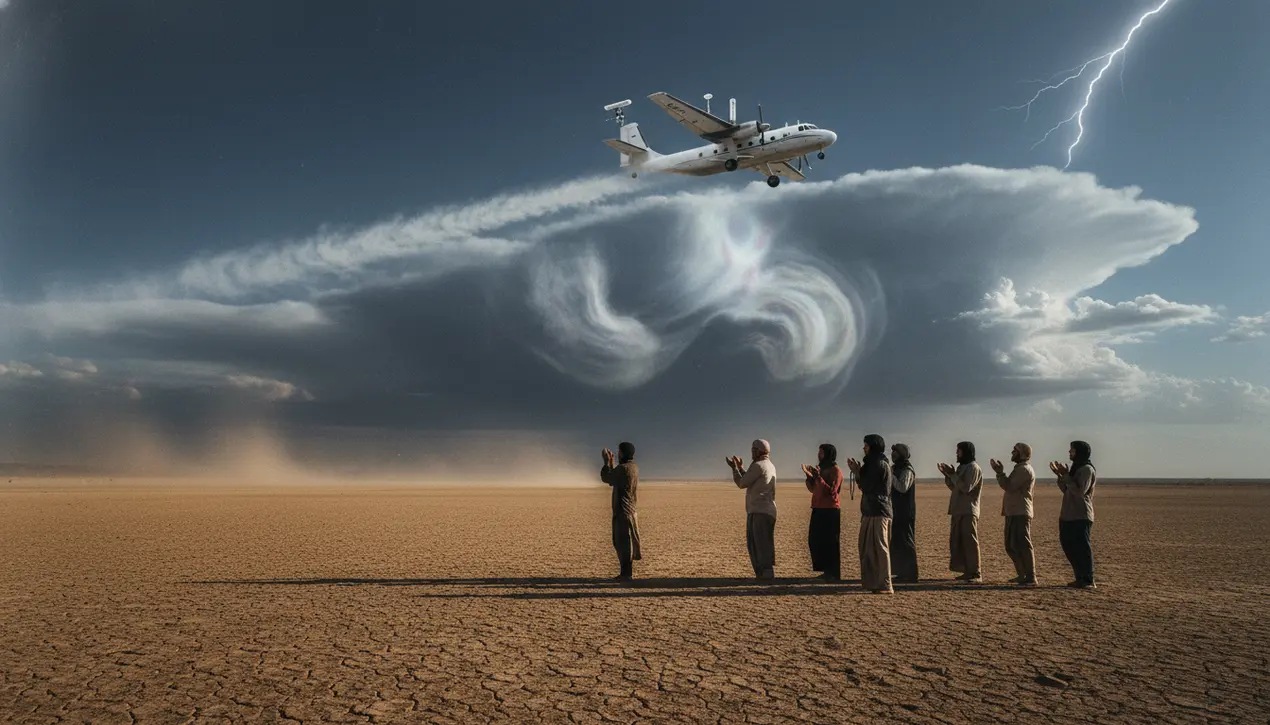
Scienceclimate scienceExtreme Weather Studies
Iran initiates cloud seeding to combat severe drought conditions.
RA
Rachel Adams
2 hours ago7 min read1 comments
The stark image of a desiccated lakebed, where Iran’s largest lake once sprawled, is a chilling testament to a hydrological crisis now so severe that it has driven communities to the ancient, desperate act of praying for rain. This is not an isolated drought but the latest, most visible symptom of a systemic water emergency fueled by decades of mismanagement, climate change-induced temperature rises, and unsustainable agricultural practices.In response, the Iranian government has turned to a technological intervention that reads like science fiction: cloud seeding. This geoengineering technique involves dispersing silver iodide or other particles into promising clouds, attempting to coax them into releasing their precious cargo of precipitation.While on the surface this appears to be a forward-thinking solution, it is a profoundly controversial and arguably last-ditch effort that underscores the depth of the nation's environmental despair. The science behind cloud seeding is itself a subject of intense debate; studies on its efficacy are often inconclusive, with critics arguing that it merely robs one region of rainfall to benefit another, creating a zero-sum hydrological game.For a country like Iran, which has been plagued by prolonged drought and faces a future of increasing water scarcity, the gamble is immense. The broader context here is a landscape in collapse.Rivers are running dry, groundwater aquifers are being pumped to exhaustion, and the resulting land subsidence is causing irreversible damage to infrastructure. This environmental degradation is not just an ecological tragedy; it is a direct threat to national stability, displacing rural populations, fueling social unrest, and creating a new class of climate refugees.The sight of people resorting to prayer is a powerful, heartbreaking indicator that trust in both traditional knowledge and modern technology has been fractured. When a society feels it has exhausted all earthly options, it turns to the divine.This human response adds a profound emotional layer to the stark data points of falling water tables and shrinking reservoirs. Experts in hydrology and climate science warn that technological fixes like cloud seeding are, at best, a temporary palliative for a terminal diagnosis.The core illness is a water governance system in disarray, characterized by inefficient irrigation for water-intensive crops like wheat and pistachios, rampant corruption in water allocation, and a political failure to prioritize conservation over short-term economic gains. Without a fundamental overhaul of how Iran manages its most vital resource—investing in modern drip irrigation, repairing ancient, leaky water networks, and implementing strict conservation policies—cloud seeding is akin to using a band-aid on a hemorrhage.The consequences of failure are almost too vast to comprehend, portending not only widespread agricultural collapse and food insecurity but also the potential for intensified regional conflicts over transboundary water sources. The story of Iran’s drought is a cautionary tale for the entire world, a stark preview of the complex, interlocking crises of water, food, and societal stability that await many nations in a warming climate.
#featured
#Iran
#cloud seeding
#drought
#water crisis
#environmental intervention
Stay Informed. Act Smarter.
Get weekly highlights, major headlines, and expert insights — then put your knowledge to work in our live prediction markets.
Comments
Loading comments...
© 2025 Outpoll Service LTD. All rights reserved.